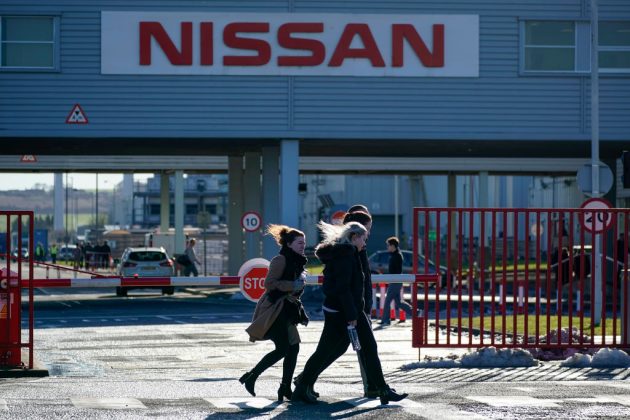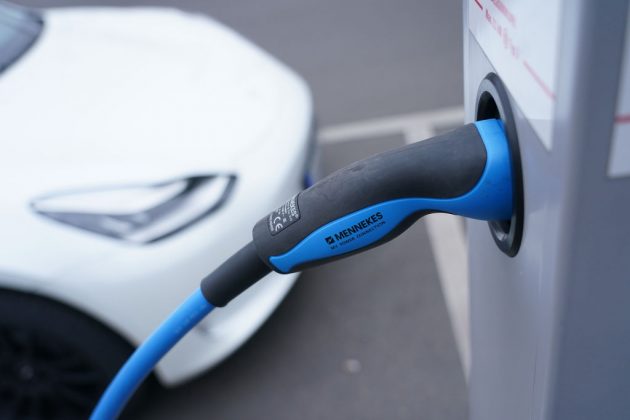Car industry straps in for rough ride in 2021

2020 was one of the worst years the UK car industry has ever experienced, with shuttered factories and closed showrooms due to Covid-19 leading to a record slump in production and sales.
But barring a disaster on the same scale, the industry is confident that it will begin to recover this year, even though the country remains in lockdown.
However, even if lockdown is lifted sooner than expected, carmakers and dealerships alike will have to compete with a raft of new challenges that will continue to squeeze the industry.
As well as the new reality of life outside the EU, carmakers must also turn even more attention to the government’s bold climate change targets, with the sale of new diesel and petrol cars to be banned by 2030.
And in addition, a crippling shortage of semi-conductors – the microchips used for EVs and electric items like laptops and mobiles – has snarled up production around the world.
Even with a last-minute Brexit free trade deal agreed, it’s clear that it will be far from plain sailing as the sector seeks to build back from last year’s devastation.
Brexit becomes a reality
After years of warnings over the impact that a no-deal Brexit would have on the sector, the car industry breathed a considerable sigh of relief in December when Johnson’s negotiating team finally reached a deal with the EU.
But in a sense, that deal is just the starting point for carmakers, which will still face complex new regulations governing their tariff-free access to the single market.
As ING’s senior economist Rico Luman says: “Although a no deal Brexit has been avoided, there may still be a need for some adjustments for carmakers.
“We have managed to avoid one potential crunch point with the free trade deal, but carmakers will now have to work out the rest of the impact over the medium term. The rules of origin for share of local input to avoid tariffs over time are a point to further investigate”.
This week alone two very different attitudes to the changes have been in evidence, with Japanese car giant Nissan describing Brexit as an “opportunity” and doubling down on its presence in the UK, and Stellantis – the new giant formed by the merger of Fiat Chrysler and PSA – putting the future of its Vauxhall assets in the country in doubt.

In the future, Stellantis’ approach could turn out to be the more common, says one industry insider:
“Unless there’s some support from the government to the UK manufacturers, it’s hard to make the decision to invest into the UK now, even with the free-trade deal.”
Before the Open: Get the jump on the markets with our early morning newsletter
Semi-conductor shortfall
Up until the last couple of weeks, many people probably would not have heard of semi-conductors – the microchips that are critical for car software, as well as other technologies.
But a global shortfall of the components has forced carmakers around the world to slow production, as has happened at Honda’s plant in Swindon and Nissan’s factory in Sunderland.
Deloitte’s UK automotive lead Mike Woodward said that the shortage could be the first of a series of different supply difficulties that could impact production, especially in the case of EVs.
“The current shortage is symptomatic of how car supply chains work. Carmakers have been caught out by both the growth in electric items like tablets and the growth in EVs. There are about 3,500 chips in a hybrid EV, compared to about 1300 in a normal petrol or diesel vehicle, so this shortage is going to force manufacturers to change their production plans”, he said.
“This could be the first of a number of supply constraints that could start impacting EV production. We saw in 2019 what happened when there was a shortage of lithium [a metal vital to EV batteries] – because the speed of uptake was quicker than expected, manufacturers got caught on the hop.
“We could see something similar this year with cobalt [another key battery component], which all comes from one small region in the Democratic Republic of Congo. It’ll get sorted out when a new source of supply is identified, but in the short term it could well cause a production slowdown.”
Red light for EV expansion?
Despite the general doom and gloom, the increase in EV sales was one undeniably encouraging point for carmakers to cling to last year.
According to the SMMT, one in every 10 cars sold in the UK last year was an EV – an impressive jump, but still a long way to go given the looming 2030 deadline.

Woodward’s colleague Jamie Hamilton, Deloitte’s head of electric vehicles, said that although EVs had surpassed diesel vehicle sales by market share last year, continued price issues meant it was likely the government would need to provide more support to consumers to hit the 2030 target.
“Until people can actually buy an EV for the same as a petrol or diesel car, price will continue to be a problem, and for the moment that has to be done through taxation or incentives”, he said.
Price parity between EVs and traditional cars isn’t expected until 2025 – depending on how fast battery prices can be brought down.
And, says Hamilton, you just have to look to China to see what happens when subsidies get removed. At the beginning of last year, the world’s largest auto market scrapped its incentive programme, leading sales of EVs to plunge 30 per cent in one year.
Along with developing new battery capacity and beefing up charging infrastructure, it’s clear that there’s much to be done across both the private and public sector if the 2030 target is to remain a realistic target.